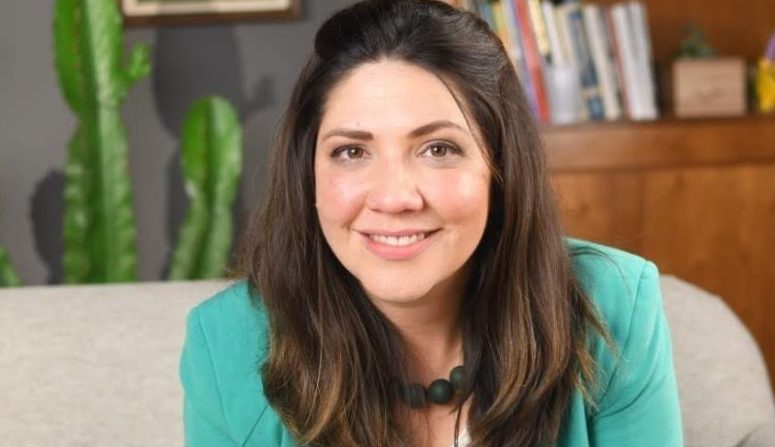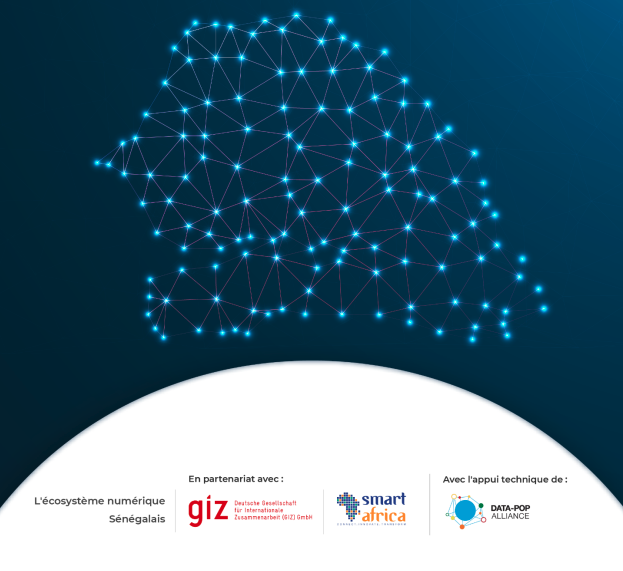GENDER DATA SERIES
The “Gender Data Series” includes interviews, videos, and opinion articles with experts from around the globe. The goal of this project is to shed light on issues at the intersection of gender and data; such as health, migration, livelihoods, and gender-based violence (GBV). In the third edition of the series, we feature an interview with Brazilian Gender Data Advocate Ana Addobbati (@aninhaaddobbati). Ana currently serves as CEO for the non-profit Viven – Cidadãos para um Amanhã Melhor, she is the board member for Civicus Global Alliance, an ambassador for the Human Rights Monitoring Initiative, and founder of Women Friendly, a social startup that provides certification to companies with strong records of fighting against workplace sexual harassment. Previously, she was the Executive Director of Social Good Brasil, a civil society initiative which promotes the development of data methodologies and new technologies to foster positive change across the country in an ethical manner.
Ana, thank you for joining us for the third edition of the “Gender Data Series". We want to talk to you about “How can data be leveraged to help organizations combat sexual abuse?” Before we begin, would you please tell us a bit about your background and current work in Brazil?
Thanks for this opportunity. I am one of the founders, along with my partner Nathalia, of Women Friendly, which has been supporting organizations to become sustainable for women (and everyone working on preventing sexual harassment) since 2017. We certify organizations that have a friendly environment for women by offering an egalitarian culture, channels for reporting incidents and requesting help, along with protocols to support the victim and punish the harasser. Our work starts with educating the leaders, followed by the staff, who are invited to deconstruct patterns of behavior that have been normalized in our culture, but are actually microaggressions that can foster a permissive environment for harassment. Moreover, we empower women to identify these situations, intervene immediately, and/or seek effective support. In 2018, we worked with the a group of several feminist organizations that together developed a national campaign during Carnival to promote awareness against sexual harassment and co-created a bot for collecting data about sexual violence via WhatsApp, which provided us data to identify the most common types of violence and vulnerability. The Harassment Map, our final product, was delivered to the authorities.
I come from the private sector, but since 2019, I have been with NGOs that address innovation, which is essential for scaling impact. I am currently a board member at Civicus Global Alliance for the Citizen Participation and ambassador of the Human Rights Monitoring Initiative.
To provide some context, how would you characterize, in general terms, sexual harassment and abuse in Brazil, and current strategies to combat this problem?
Brazil is the 5th most dangerous country for women and girls. Additionally, Recife, the city where I’m from, has been considered one of the most lethal cities for women in the world since the 1990’s. This is one outcome of the misogynist culture evident across several institutions that validates the aggressor. In the 1930’s, the church and government were leading campaigns to make women remain at home and continue to rely on their husbands as providers. It is not a surprise that we are still fighting for basic rights, as we have been neglected for centuries. Having said that, civil society is now one of the major forces driving change. This is taking place along with increasing income, academic literacy, and economic position of the Brazilian woman. And let’s not forget the vast population of single mothers that lead households. Putting this together, we have a scenario where the population, along with civil society, is constantly pressuring the judicial system, congress, and the local governments to effect change. The major outcome of those demands is the Law Maria da Penha (named for a victim of domestic violence who also leads an institute against this type of violence), one of the most modern and effective legal statutes in the world, which has been used to prevent feminicide and push authorities to protect women. The private sector is also taking important steps to guarantee the safety of their employees, generate data, foster networks of protection with shelters for victims, and by funding or developing awareness campaigns.
In spite of these efforts, women are revictimized every day in police stations, during court procedures and trials, and by the congress and the executive branch of the government, who have been overlooking budgeting and public policies that would empower women to denounce their abusers and receive support. The results of this neglect can be seen in the lack of structure for collecting data that could provide subsidies for more systematic and effective interventions to change this situation.

Given your experience, what is the most challenging part of combating sexual harassment and abuse in the workplace?
As I explained before, we have been living in a permissive culture that normalizes and fosters violence, and women who dare to work are supposed to bear harassment, which is often disguised as informal banter, jokes, or flirting. The cultural aspect is relevant, but not the sole cause. The existing economic gap (women earn 30% less than men — this is particularly true now after this severe economic downturn) in Brazil, makes women (especially Black women), the most vulnerable to losing their jobs. This also makes it more likely for women to remain silent after a situation of harassment. If we take into account that men occupy the majority of the decision making positions, they have the power to fire, promote, and persecute women who denounce and speak against this type of violence. This is why 15% of women quit upon experiencing harassment, instead of denouncing it or asking for help.
So, to answer your question: tackling this power imbalance and ensuring that women are able to seek help in situations of harassment, regardless of the position they occupy within an organization, are great challenges.
Shifting towards the role of data, what role do you think it plays in addressing and trying to eliminate sexual harassment in the workplace?
Data is key for empowering women to move forward with official complaints. At Women Friendly, we had started to speak about this kind of violence in the last 5 years, following the #metoo movement and other local campaigns, such as “No means no”, and we found that the number of cases in the Brazilian court have increased 300% since 2017. This data is relevant because it shows that avoiding addressing the problem properly may translate into a legal dispute and a reputational crisis for the organization. If you see that 84% of these cases are labor-related, it is clear that the work environment is risky for women, which can pressure authorities to uphold the existing support infrastructure and legal mechanisms to fight against this violence. In 2018, for example, a new law was introduced in Brazil that recognizes digital harassment and allows for the offender to be sent to prison. This is not merely the result of the narrative used to advocate for women rights, it is directly linked to the data collected by institutes, CSOs, and authorities, which are positioning harassment as a key thematic area to be discussed and addressed in the society.

There are certain indicators and methods (such as surveys) to identify whether sexual harassment and abuse are taking place in an organization; what are some best practices that you would recommend to address this issue?
This is an important question. In our experience, the desert of data in terms of denunciations, reports of cases to HR, or simply the refusal to fill out a diagnosis survey and disclose personal experiences of violence, shows that fear is ever-present and the problem is even more critical than you can imagine. If you take into account that organizations reflect the existing culture in society, you must acknowledge that harassment is taking place in the workplace too. In sum, the opposite of what we want is true: there are failing mechanisms that instead of protecting women, silence them.
Having said that, we [Women Friendly] recommend starting first by transforming the workplace culture by ensuring that it is a safe space where people can speak out. Secondly, by implementing impartial mechanisms to report abusive situations and promote them so that people are aware they exist, and finally by conducting surveys (which should be anonymous). However, the most important part is that the resulting data has to be used by decision-makers in the organization, who have the power to intervene to mitigate and eliminate violence against women in the workplace. Mapping out the relations between HR and other groups that now seem risky or suspicious is relevant for creating a governance structure inside the organizations that ensures confidentiality and proper intervention.
Surveys can help to collect quality data, including on intersections of vulnerability (gender, race, class), to more adequately understand the current situation. Unions could also play a role in collecting data, publishing it, and supporting victims more effectively.
In practical terms, how should data be used or harnessed when dealing with topics that have such a high level of sensitivity, such as sexual abuse?
First of all, by ensuring confidentiality and fighting against bias. By creating the right questions that map out power imbalances, shed light on the intersectional inequality in the workplace instead of casting women as the problem, or as fragile individuals who can not handle the work environment. Biased data can potentially be used by organizations to justify not hiring women, as the results may, for instance, show them as being inadequate for certain working environments.
What process, policies, or specific actions do you find to be most effective after identifying cases of sexual abuse in an organization?
As I explained above, lack of data does not mean that harassment does not exist. A credible mechanism for reporting, effective governance for dealing with cases and investigation processes are the best path for leaders to identify where immediate intervention is needed. And of course, a culture that fosters and encourages the staff to speak out instead of promoting and reinforcing fear.
Is there a resource (a publication, documentary, book or podcast), that you would recommend readers to check out if they wish to learn more about sexual harassment in the workplace and the importance of data to address it?
In Brazil, the Brazilian Office of the Public Prosecutor has been releasing several articles and publications that are a good source of data and protocols for organizations. Institutes like the Maria da Penha Institute and Patricia Galvao, from time to time, also publish the results of scientific research. I would also recommend following Genero and Numero (Gender and Numbers, in English), which is a media startup focused on data-based news narratives, which is constantly reporting the most recent facts about workplace harassment.
We thank Ana Addobbati for her invaluable time and insights, and invite you to check out our two previous editions of the “Gender Data Series”:




